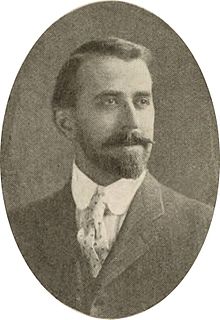Ralph Vary Chamberlin
| Ralph Vary Chamberlin | |
|---|---|

Chamberlin circa 1905
|
|
| Born |
January 3, 1879 Salt Lake City, Utah |
| Died | October 31, 1967 (aged 88) Salt Lake City, Utah |
| Nationality | American |
| Fields |
|
| Institutions |
University of Utah Museum of Comparative Zoology Brigham Young University |
| Alma mater |
Cornell University University of Utah |
| Thesis | North American Spiders of the Family Lycosidae (1905) |
| Doctoral advisor | |
| Notable students | |
| Known for |
|
| Spouses |
|
| Children | 10 |
Ralph Vary Chamberlin (January 3, 1879 – October 31, 1967) was an American biologist, ethnographer, and historian from Salt Lake City, Utah. He was a faculty member of the University of Utah for over 25 years, where he helped establish the School of Medicine and served as its first dean, and later became head of the zoology department. He also taught at Brigham Young University and the University of Pennsylvania, and worked for over a decade at the Museum of Comparative Zoology at Harvard University, where he described species from around the world.
Chamberlin was a prolific taxonomist who named over 4,000 new animal species in over 400 scientific publications. He specialized in arachnids (spiders, scorpions, and relatives) and myriapods (centipedes, millipedes, and relatives), ranking among the most prolific arachnologists and myriapodologists in history. He described over 1,400 species of spiders, 1,000 species of millipedes, and the majority of North American centipedes, although the quantity of his output was not always matched with quality, leaving a mixed legacy to his successors. He also did pioneering ethnobiological studies with the Goshute and other indigenous people of the Great Basin, cataloging indigenous names and cultural uses of plants and animals.
Chamberlin was honored by his colleagues at the University of Utah, however, he was disliked and even considered mean by some arachnologists, including some of his former students. After retirement he continued to write, publishing on the history of education in his home state, especially that of the University of Utah.
...
Wikipedia
